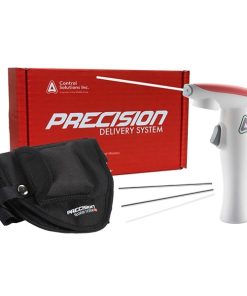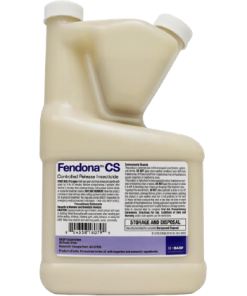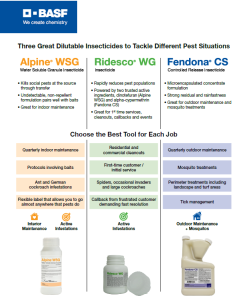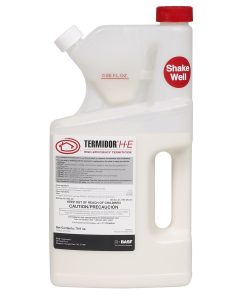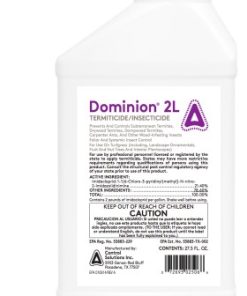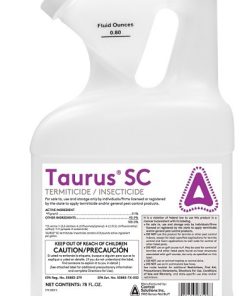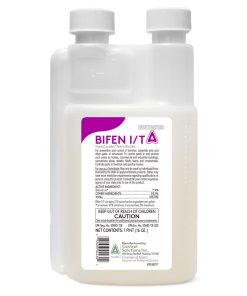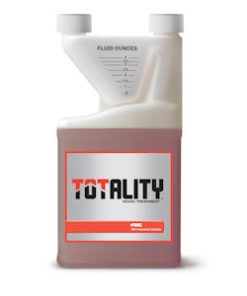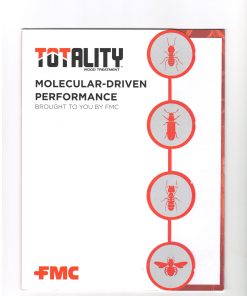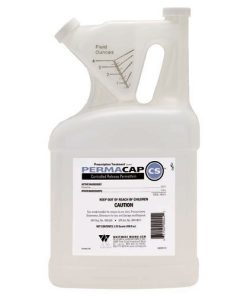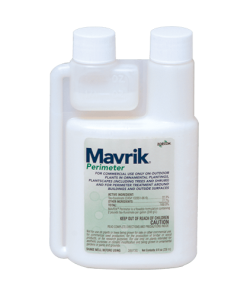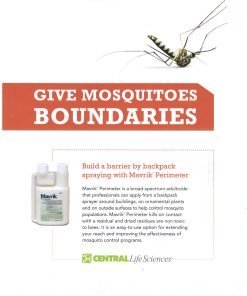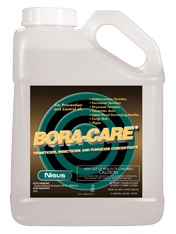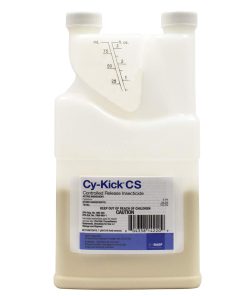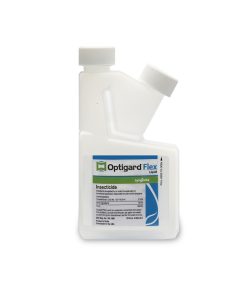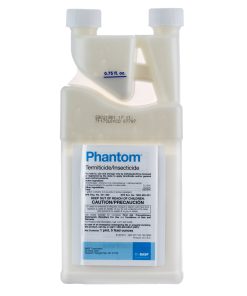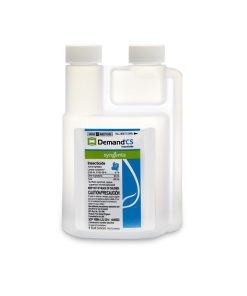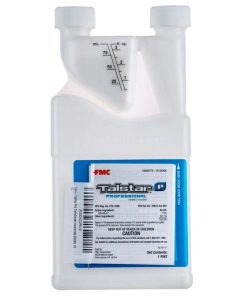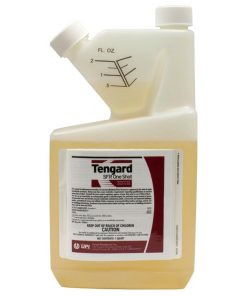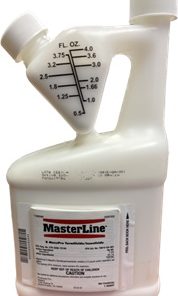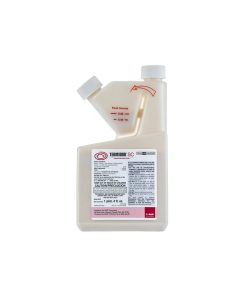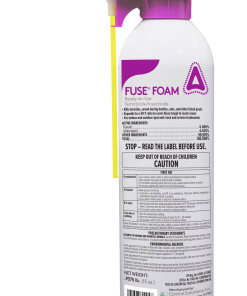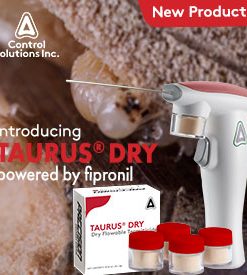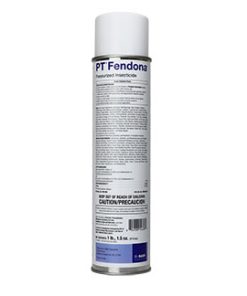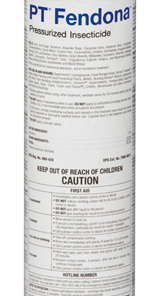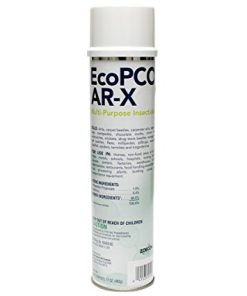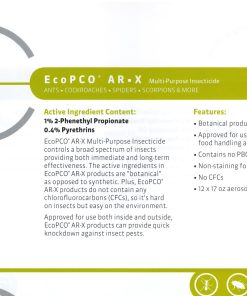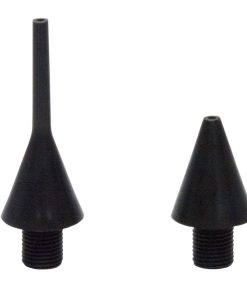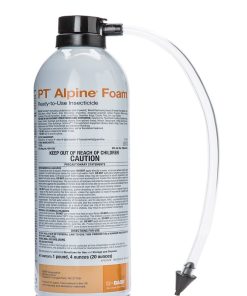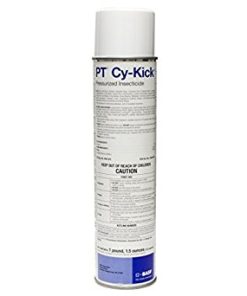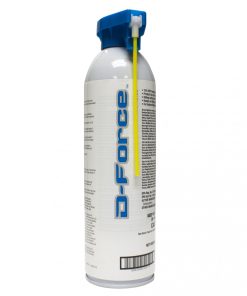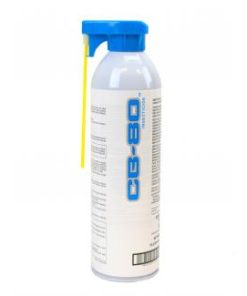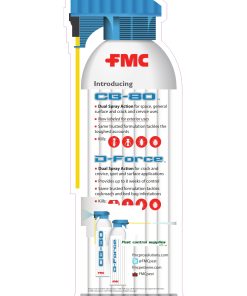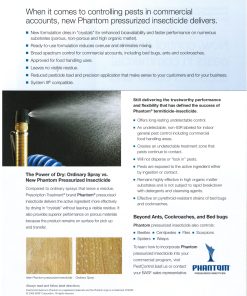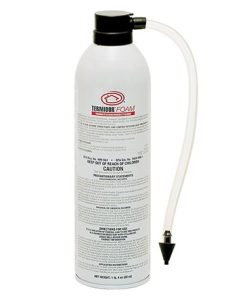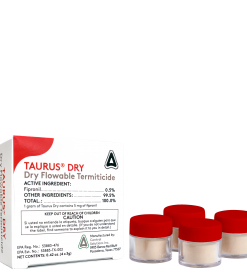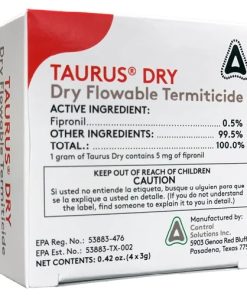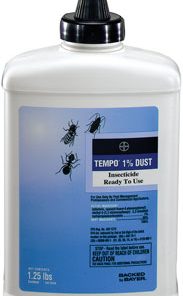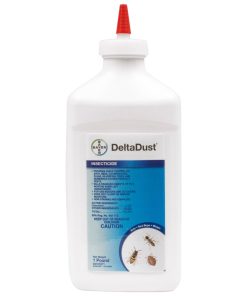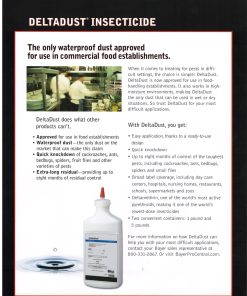Drywood termite control
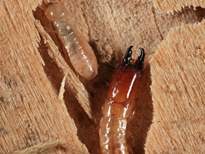
Drywood termite control may involve several processes. First, a little about Drywood termites. Drywood termites form colonies of up to 2,500 members. Unlike subterranean termite species, drywood termite colonies do not have a worker caste, as the work is done by immature termites before they reach adulthood. Drywood termites usually swarm on sunny, warm days after a sudden rise in temperature. Drywood termites infest dry wood, like that found in attic framings. They can be transported to new locations via an infested piece of furniture, a picture frame, etc.
Signs of infestations by drywood termites and control measures differ drastically from those for subterranean termites. Drywood termites occur in small colonies in isolated wood pieces. Multiple colonies can infest a structure simultaneously.
Control methods include whole structure fumigation, spot treatment with insecticides, or spot heat, shock, microwave, and liquid nitrogen treatment.
Drywood termites remain hidden within the wood or other material on which they feed, so they are seldom seen. Fecal pellets are ejected periodically, while swarmers fly from colonized wood in late spring and
summer.
Galleries or tunnels in the wood made by drywood termites cut across the grain of the wood and destroy both soft spring wood and the harder summer growth. Galleries made by the subterranean species follow thegrain of the wood and the soft spring wood is attacked first.
Treatment of the soil under and around the structure will not protect a structure from drywood termites. Baiting systems (such as Sentricon, Exterra, Advance,Trelona) will not protect a structure from drywood termites.
Direct treatment of lumber with products such as Bora-Care and Totality MAY provide protection if the drywood termites must tunnel through the treatment to infest the wood.
Methods of control primarily involve killing the termites within the wood.If the infestation is localized and accessible, a drill and treat approach with an insecticide such as Taurus Dry, Termidor Foam, or Fuse Foam may be appropriate.
With a drill and treat method, probing, sounding, can be used to detect termite galleries within the wood. Once these areas are determined, the infested members are drilled with a small bit. An insecticide is then injected into the holes. Formulations may include liquids, dusts, foams, or aerosols. Insecticides with non-repellentresiduals provide the best results.
Signs of infestation include:
•Winged insects emerging in evenings and night attracted to lights or TV.
•Discarded wings accumulating around window sills or in spider webs
•Wooden pellets (much smaller that rice grains) accumulating on floors or under furniture.
These pellets are cream to reddish-brown or black. The color of the pellets is not related to the color of the wood. The pellets are about 1-2 mm long and distinctively six-sided, making them easily distinguishable from other wood- destroying organisms. Pellets usually fall into piles as the termites push them out of the infested wood.
A sign of advanced infestation is surface blisters. These termites sometimes tunnel close to the surface giving the wood a blistered appearance. Infestations may be detected by tapping the wood every few inches with the handle of a screwdriver. Damaged wood sounds hollow, and a papery rustling sound indicates tunnels just beneath the surface.
Winged termites can be distinguished from winged ants because termites have a thick waist, straight antennae, and equal-length wings whereas ants have a distinctly thin or wasp-like waist, elbowed antennae, and shorter hind wings than fore wings.
Swarming (mating flights) often occur in the evening hours. Late Spring and Summer months are the peak season for winged drywood termite warming flights. If you suspect an infestation of drywood termites make sure a positive identification is done by an experienced pest control operator. Drywood termites will also infest pieces of furniture (particularly antique pieces). Removal of the item and separate treatment of the piece may be all that is necessary in some instances.
In some cases, treatment of an infestation of drywood termites may not be needed if the area of infestation can be identified and physically removed (this may or may not be practical from a structural standpoint).
Insecticide Concentrates
– These concentrates are mixed with water and used in a compressed hand held sprayer to make your application.
Spray Concentrates
Spray Concentrates
Spray Concentrates
Spray Concentrates
Spray Concentrates
Spray Concentrates
Spray Concentrates
Spray Concentrates
Spray Concentrates
Spray Concentrates
Spray Concentrates
Spray Concentrates
Spray Concentrates
Spray Concentrates
Spray Concentrates
Spray Concentrates
Spray Concentrates
Spray Concentrates
Spray Concentrates
Spray Concentrates
Spray Concentrates
Spray Concentrates
Aerosols & Ready to Use Products
These “ready to use” products are convenient and great for a contact kill and great for flushing out insects. Most offer great residual properties as well.
Aerosols & Ready To Use Products
Dust Insecticides
Aerosols & Ready To Use Products
Aerosols & Ready To Use Products
Aerosols & Ready To Use Products
Aerosols & Ready To Use Products
Aerosols & Ready To Use Products
Aerosols & Ready To Use Products
Aerosols & Ready To Use Products
Aerosols & Ready To Use Products
Aerosols & Ready To Use Products
Aerosols & Ready To Use Products
Aerosols & Ready To Use Products
Dust Insecticides
These dust insecticides are ready to use products that are most commonly used with hand-held duster to make your application. We carry some of the more popular products commonly used in the professional pest control market.
Dust Insecticides
Dust Insecticides
Dust Insecticides
Dust Insecticides

